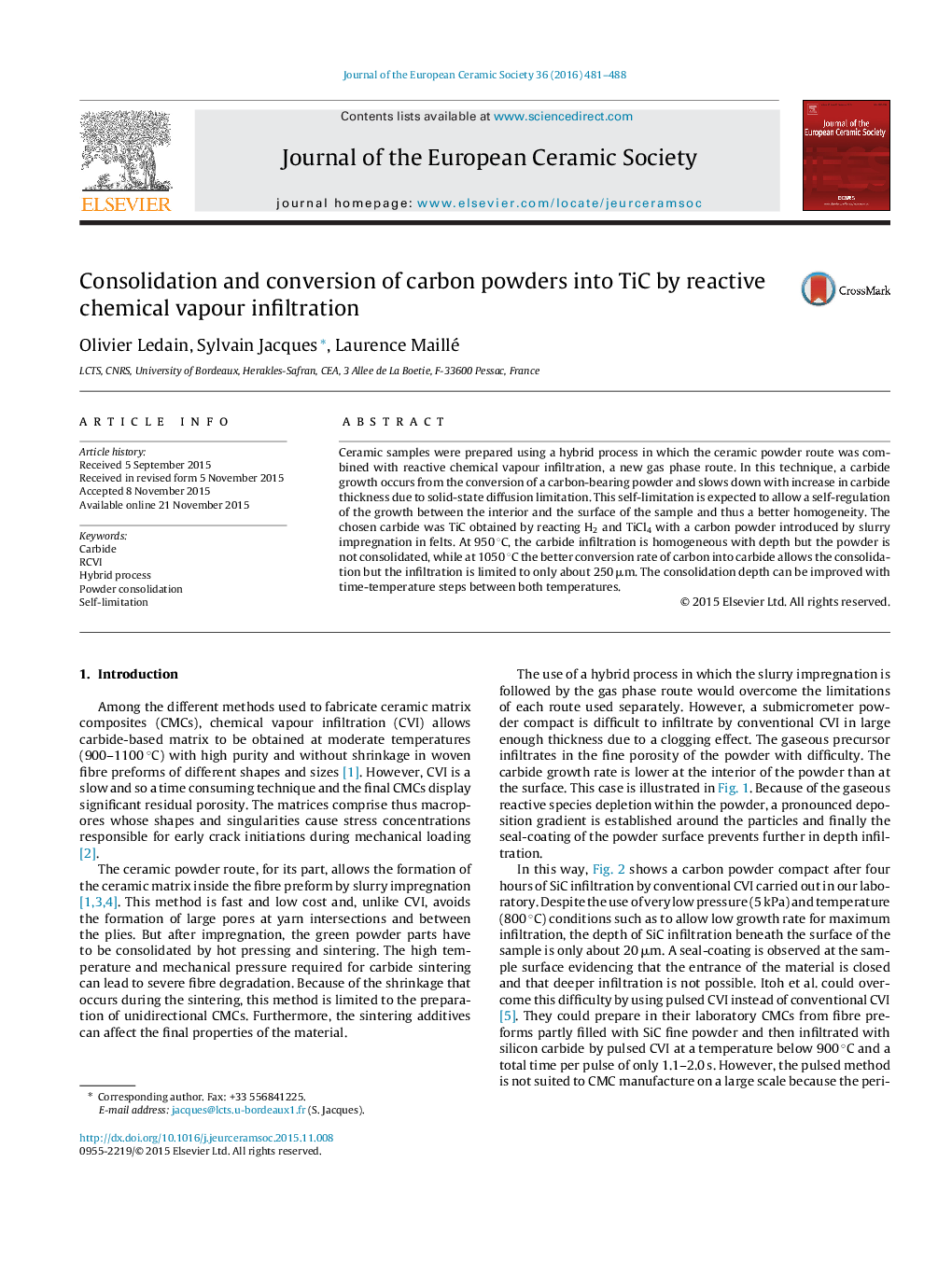| Article ID | Journal | Published Year | Pages | File Type |
|---|---|---|---|---|
| 10629400 | Journal of the European Ceramic Society | 2016 | 8 Pages |
Abstract
Ceramic samples were prepared using a hybrid process in which the ceramic powder route was combined with reactive chemical vapour infiltration, a new gas phase route. In this technique, a carbide growth occurs from the conversion of a carbon-bearing powder and slows down with increase in carbide thickness due to solid-state diffusion limitation. This self-limitation is expected to allow a self-regulation of the growth between the interior and the surface of the sample and thus a better homogeneity. The chosen carbide was TiC obtained by reacting H2 and TiCl4 with a carbon powder introduced by slurry impregnation in felts. At 950 °C, the carbide infiltration is homogeneous with depth but the powder is not consolidated, while at 1050 °C the better conversion rate of carbon into carbide allows the consolidation but the infiltration is limited to only about 250 μm. The consolidation depth can be improved with time-temperature steps between both temperatures.
Related Topics
Physical Sciences and Engineering
Materials Science
Ceramics and Composites
Authors
Olivier Ledain, Sylvain Jacques, Laurence Maillé,
